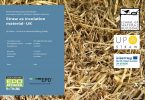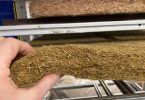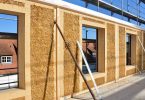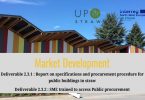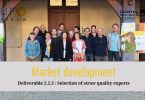Building with natural materials brings benefits to the environment because their manufacture and use do not consume as much energy as conventional materials do. The use of natural materials has been regulated in some countries with regard to their structural capacities. In the thermal aspect, straw bales have the advantages of high thermal resistance, time lag and temperature damping, which are important to attain thermal comfort.
This paper presents values of time lag and temperature damping obtained through the on-site monitoring of a straw bale wall in a building in Tecate, Baja California, Mexico. The floor area of the building is 35m² and is made up entirely of load-bearing walls made with three-wire wheat straw bales. Monitoring was carried out for sixty-six days, taking temperature and heat flux measurements on the surfaces of one wall every 10 min. Additionally, the indoor black globe temperature was monitored. The results showed a time lag of 9.12 h, a temperature damping of 93.6% and apparent thermal resistance equivalent to R39. The indoor black globe temperature on the inside of the building stood at 25.6°C with a swing of 0.5°C. The method used in this study gives results that are comparable to those reported in laboratory tests. The data reported can be useful in the design of straw bale constructions in other parts with similar climates.
Authors:
- Gallegos-Ortega, Ricardo
- Magaña-Guzmán, Tonatiuh
- Reyes-López, Jaime A.
- Romero-Hernández, M. Socorro
Link: http://www.sciencedirect.com/science/article/pii/S0360132317303608


